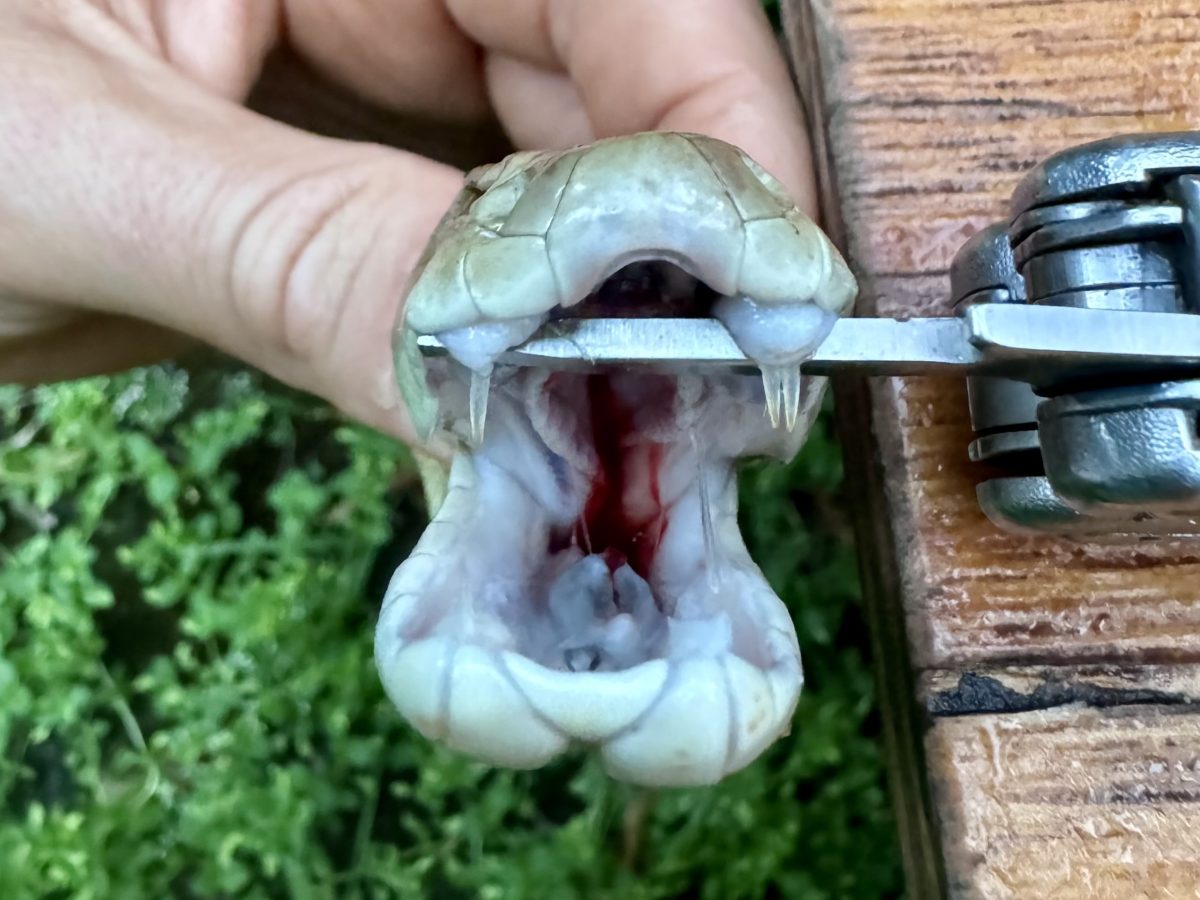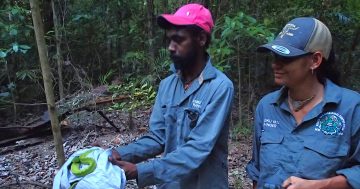
Customers on a recent Cockatours camping group got more than they signed up for when they discovered a three-fanged taipan. Photo: Supplied.
Snakes are fairly commonplace in remote Cape York, but it’s not every day you see a seven-foot specimen with three fangs.
Cockatours owner Brian “Rossy” Ross was taking a group out on a Cape York tour when he discovered a seven-foot-long taipan on the road.
The group had just been listening to a podcast about taipans as they drove across the Kutini-Payamu (Iron Range) National Park.
“I saw a massive taipan that was dead on the road, pulled over straight away and grabbed it, because it was the best opportunity to show them, especially after they had just heard about it,” Mr Ross explained.
“I was showing them what a taipan looks like and pointing out some of its features, and then proceeded to show them the fangs when I realised that it had three – there were two on one side.”
“People have never seen a taipan before, especially one that’s seven feet long, so that was already pretty impressive for them, but everyone knows that a snake normally has two fangs, so seeing one with three was pretty mind-blowing for them.”
Mr Ross said he was surprised at first, but that the three fangs made sense in theory.
“[Venomous snakes] need fangs to inject the venom, so if they were to lose their fangs, they would pretty much just be a gummy shark and wouldn’t have any way of immobilising their prey,” he said.
“They will naturally replace their fangs, usually once they’ve lost them, but in this case, I’m guessing one’s come loose from its base or maybe it was getting ejected and another started growing beside it.
“I didn’t get to see if it was stable or not because even when it’s dead, if I got pricked it could potentially result in envenomation.”
Distinguished Professor Lin Schwarzkopf, head of zoology and ecology at James Cook University and herpetology expert, said the three-fang deformity was especially rare.
“Various scale and other deformities occur fairly regularly, but I have not heard of that particular one before,” she said.
“It could be that it did not shed or partially lost one fang and regrew another, or that there was a birth defect.
“These kinds of deformities happen from time to time; high temperatures, low temperatures or inappropriate hydric conditions during development can cause deformities.”











